Nepalese Army (NA) Divisions
By 2012 the roughly 100,000-strong Nepalese Army (NA) was organized into six divisions (Far-Western, Mid-Western, Western, Central, Eastern, and Valley Divisions) with separate aviation, parachute, and security brigades as well as brigade-sized directorates encompassing air defense, artillery, engineers, logistics, and signals that provide general support to the NA.
With the objective of polishing and maintaining the operational readiness capabilities and professionalism of all Junior Commissioned Officers, Junior Leaders and soldiers stationed under every division for fulfilling their tasks as per the divisional Operational requirements, Divisional Training Centers were established under each Division Headquarters. For the fulfillment of the above objectives, Eastern Divisional Training Center was established in Letang of Morang District on 24 March 2011, Valley Divisional Training Center was established at Narayanhiti of Kathmandu District on 20 September 2010, Mid Divisional Training Center was established at Sunachari of Makwanpur District on the 12th February 2010, Western Divisional Training Center was established at Khairenitar of Tanahu District on 15 February 2010, Mid Western Divisional Training Center was established at Rajhena of Banke District on the 9th December 2010 and Far Western Divisional Training Center was established at Dipayal of Doti District on 16 March 2010.
In the early 1990s the Royal Nepal Army, numbering approximately 35,000, was the country's sole military force. Army organization followed the British pattern. Field formations included fourteen infantry brigades. The brigades were numbered consecutively from one through sixteen (minus numbers eight and twelve, which were considered inauspicious according to Hindu astrology). The fourteen brigades, in turn, controlled a variety of units, including infantry battalions, an airborne unit, an air defense regiment, a signal battalion, a transportation regiment, an armored car company, and an unknown number of independent infantry companies and special forces units.
One of the army infantry battalions served as part of the United Nations Interim Force in Lebanon (UNIFIL) and performed peacekeeping duties in the Arab-Israeli dispute. Personnel in this battalion served six-month tours of duty, after which they returned home and were replaced by personnel drawn from other units on a rotating basis. Selection for service in UNIFIL was highly coveted by soldiers of all rank because those who served abroad received United Nations-scale pay and perquisites, as well as the opportunity to purchase consumer items that were unavailable or prohibitively expensive at home.
The peacetime disposition of forces underscored the fact that the army's primary mission was to back up local police in maintaining security in the Kathmandu Valley, the seat of government and the linchpin of political stability in the country. Fully half of the army brigades were garrisoned in or around the capitol, including the elite Royal Guards Brigade (the ninth) that served as the monarchy's praetorian guard. Additionally, many of the independent and specialized army units were attached to brigades stationed in Kathmandu. These units included an airborne battalion (known as the "para battalion") and various signal, engineer, artillery, transport, and medical units. Brigade headquarters outside the capital were located at Pokhara, Dipayal, and other towns across the country. Each of the brigades bore a distinctive unit nomenclature after the British fashion and wore distinctive arm patches. Lower echelon designations within each brigade included squadrons and troops (equivalent to United States Army companies and platoons, respectively).
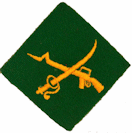 The Far Western Infantry Division was established on July 5, 2004 (Ashad 21, 2061) in scenic and beautiful land of Dipayal. The Flag of this Division was raised in Quarter Guard on May 1, 2005 (Baisakh 18, 2062). Its Area of Responsibility (AOR) consists of the entire Far Western Development Region including Seti and Mahakali zones in which No. 5 and N0. 25 Brigades are respectively located. The Area of Responsibility covers 19,539 Sq.Km. and altogether 9 districts come under the Divisional AOR. The population of the AOR of Far Western Division is 21,91,330 and the literacy rate being 47.3%. Since the day of establishment, the Division is committed to maintain peace and security of the people throughout the area of responsibility. The Division was awarded with recommendable certificate by the then Chief of Army Staff General Pyar Jung Thapa for conducting successful military operations.
The Far Western Infantry Division was established on July 5, 2004 (Ashad 21, 2061) in scenic and beautiful land of Dipayal. The Flag of this Division was raised in Quarter Guard on May 1, 2005 (Baisakh 18, 2062). Its Area of Responsibility (AOR) consists of the entire Far Western Development Region including Seti and Mahakali zones in which No. 5 and N0. 25 Brigades are respectively located. The Area of Responsibility covers 19,539 Sq.Km. and altogether 9 districts come under the Divisional AOR. The population of the AOR of Far Western Division is 21,91,330 and the literacy rate being 47.3%. Since the day of establishment, the Division is committed to maintain peace and security of the people throughout the area of responsibility. The Division was awarded with recommendable certificate by the then Chief of Army Staff General Pyar Jung Thapa for conducting successful military operations.
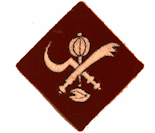 The Mid-Western Division HQ was established in Dec 29, 2001 (2058 Poush 14) with the name of Western Division at Nepalgunj, Bardiya. Later, it was shifted to Tribhuvan Sainik Shivir, Surkhet on Nov 22, 2004 (2061 Mangsir 7). Its Area of Responsibility (AOR) consists of 15 districts of Mid-Western Development Region with the area of 42,378 sq. km. The population of the AOR is 30,12,975 and the literacy rate is 49.1 %. The Division includes 3 infantry brigades- No.24, No 19 and No 4 brigade located at Jumla, Dang and Nepalgung respectively. The former General Officer Commanding (GOC) of this Division were Lt General Sadip Bahadur Shah (Retd.), Maj Gen Govinda Bahadur Gurung (Retd.), Maj Gen Bala Nanda Sharma (Retd.), COAS General Rukmangath Katawal (Retd.), Maj Gen Dipak Bikram Rana (Retd.), COAS General Chhatra man Singh Gurung(Retd.), Maj Gen Ananta Bahadur Thebe (Retd.), Maj Gen Pradip Jung Thapa (Retd.), Maj Gen Keshav Raj Mahat (Retd.), Maj Gen Pradip Bikram Rana (Retd.), Maj Gen Rajendra Bikram Shah, Maj Gen Rajendra Bahadur Karki and Maj Gen Shekhar Singh Basnyat.
The Mid-Western Division HQ was established in Dec 29, 2001 (2058 Poush 14) with the name of Western Division at Nepalgunj, Bardiya. Later, it was shifted to Tribhuvan Sainik Shivir, Surkhet on Nov 22, 2004 (2061 Mangsir 7). Its Area of Responsibility (AOR) consists of 15 districts of Mid-Western Development Region with the area of 42,378 sq. km. The population of the AOR is 30,12,975 and the literacy rate is 49.1 %. The Division includes 3 infantry brigades- No.24, No 19 and No 4 brigade located at Jumla, Dang and Nepalgung respectively. The former General Officer Commanding (GOC) of this Division were Lt General Sadip Bahadur Shah (Retd.), Maj Gen Govinda Bahadur Gurung (Retd.), Maj Gen Bala Nanda Sharma (Retd.), COAS General Rukmangath Katawal (Retd.), Maj Gen Dipak Bikram Rana (Retd.), COAS General Chhatra man Singh Gurung(Retd.), Maj Gen Ananta Bahadur Thebe (Retd.), Maj Gen Pradip Jung Thapa (Retd.), Maj Gen Keshav Raj Mahat (Retd.), Maj Gen Pradip Bikram Rana (Retd.), Maj Gen Rajendra Bikram Shah, Maj Gen Rajendra Bahadur Karki and Maj Gen Shekhar Singh Basnyat.
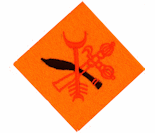 The Western Divisional Headquarters was established on 13 February, 2003 (Falgun 1, 2059) as Central Division with Headquarters at Pokhara. The Central Division was renamed to its present name as the Western Div on 17 September, 2004. Its Area of Responsibility (AOR) consists of 16 districts of entire Western Development Region with the area of 29,398 sq. km. There are 3 Infantry Brigades under its command, No 3 Brigade, No 22 Brigade and No.23 Brigade. There are number of pilgrimage sites within this Division. Lumbini, the birth place of Lord Buddha, is the most sought destination for Buddhist pilgrims. Likewise, Manakamana and Muktichhetra are famous destination for Hindu sectors of the world. The Divisional AOR consists of a number of important rivers like Kali Gandaki, Budi Gandaki, and Seti Gandaki.
The Western Divisional Headquarters was established on 13 February, 2003 (Falgun 1, 2059) as Central Division with Headquarters at Pokhara. The Central Division was renamed to its present name as the Western Div on 17 September, 2004. Its Area of Responsibility (AOR) consists of 16 districts of entire Western Development Region with the area of 29,398 sq. km. There are 3 Infantry Brigades under its command, No 3 Brigade, No 22 Brigade and No.23 Brigade. There are number of pilgrimage sites within this Division. Lumbini, the birth place of Lord Buddha, is the most sought destination for Buddhist pilgrims. Likewise, Manakamana and Muktichhetra are famous destination for Hindu sectors of the world. The Divisional AOR consists of a number of important rivers like Kali Gandaki, Budi Gandaki, and Seti Gandaki.
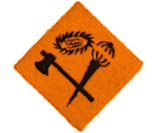 The Mid Divisional [aka Central Division] Headquarter, with the motto, "Absolute Loyalty for the Country” was established on 1st of Marga 2061 B.S. The Mid Division Headquarter is at Suparetar, Heatauda of Makawanpur District. Its Area of Responsibility (AOR) consists of the entire Mid Development Region except the Kathmandu valley. The AOR of this Division is 27,410 sq. km. The Divisional AOR consists of 14 districts. No. 6 Brigade HQ, Baireni, No. 7 Brigade HQ, Chanwan and No. 9 Brigade Hq, Sindhuli are under the command of Mid Division HQ. Major General Thakur Subba was first General Officer Commanding (GOC) of this Division. After him this Division was respectively commanded by Major General Toran Jung Bdr. Singh (Retd.), Major General Netra Bdr Thapa (Retd.), Major General Pawan Bdr Pandé, Major General Rajendra Chhetri and Major General Sundar Pudasaini.
The Mid Divisional [aka Central Division] Headquarter, with the motto, "Absolute Loyalty for the Country” was established on 1st of Marga 2061 B.S. The Mid Division Headquarter is at Suparetar, Heatauda of Makawanpur District. Its Area of Responsibility (AOR) consists of the entire Mid Development Region except the Kathmandu valley. The AOR of this Division is 27,410 sq. km. The Divisional AOR consists of 14 districts. No. 6 Brigade HQ, Baireni, No. 7 Brigade HQ, Chanwan and No. 9 Brigade Hq, Sindhuli are under the command of Mid Division HQ. Major General Thakur Subba was first General Officer Commanding (GOC) of this Division. After him this Division was respectively commanded by Major General Toran Jung Bdr. Singh (Retd.), Major General Netra Bdr Thapa (Retd.), Major General Pawan Bdr Pandé, Major General Rajendra Chhetri and Major General Sundar Pudasaini.
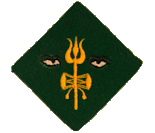 The ‘Valley Command Office’, with the motto “Peace and Security Forever”, was established on May 19 2003 A.D (2060 Jestha 5). Later it was renamed as “Valley Division HQ” on Dec 13 2003 (2060 Poush 15). At the beginning, the Division HQ was based at Singha Durbar, Kathmandu and now it is relocated at the Narayanhiti Palace. Its area of responsibility includes the three districts of the Kathmandu Valley- Kathmandu, Bhaktapur and Lalitpur with the area of 565 sq. km. Maj. Gen. Kiran Shumsher Thapa (Retd.) was the first General Officer Commanding. The successive GOCs were Maj. Gen. Dilip Karki (Retd.), Maj. Gen. Dipak Bikram Rana (Retd.), Maj. Gen. Kul Bahadur Khadka (Retd.), Maj. Gen. Anil Jung Thapa (Retd.), Maj. Gen. Daman Bahadur Ghale (Retd.), Maj Gen Keshav Raj Mahat (Retd.), Maj Gen Victor JB Rana, Maj Gen Mahesh Bikram Karki, Major General Purna Chandra Thapa, Major General Himalaya Thapa and Major General Anuj Basnyat.
The ‘Valley Command Office’, with the motto “Peace and Security Forever”, was established on May 19 2003 A.D (2060 Jestha 5). Later it was renamed as “Valley Division HQ” on Dec 13 2003 (2060 Poush 15). At the beginning, the Division HQ was based at Singha Durbar, Kathmandu and now it is relocated at the Narayanhiti Palace. Its area of responsibility includes the three districts of the Kathmandu Valley- Kathmandu, Bhaktapur and Lalitpur with the area of 565 sq. km. Maj. Gen. Kiran Shumsher Thapa (Retd.) was the first General Officer Commanding. The successive GOCs were Maj. Gen. Dilip Karki (Retd.), Maj. Gen. Dipak Bikram Rana (Retd.), Maj. Gen. Kul Bahadur Khadka (Retd.), Maj. Gen. Anil Jung Thapa (Retd.), Maj. Gen. Daman Bahadur Ghale (Retd.), Maj Gen Keshav Raj Mahat (Retd.), Maj Gen Victor JB Rana, Maj Gen Mahesh Bikram Karki, Major General Purna Chandra Thapa, Major General Himalaya Thapa and Major General Anuj Basnyat.
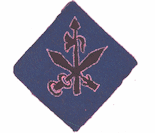 The Eastern Divisional Headquarter, with the motto," Security of Nation as Supreme Duty", was raised on Jan 29, 2003 (2059 Magh 15 B.S). The Eastern Division Headquarters is stationed at Itahari. Its Area of Responsibility (AOR) includes the area of Sagarmatha, Koshi and Mechi zones, in which No. 18 Bde, No. 2 Bde and No. 21 Bde are respectively located. The AOR of this Division consists of 16 Districts with area of 28,456 sq. km. The population of the Division is 5, 34,476 and the literacy rate is 49.4%. The major ethnic groups of the area are the Kirats which includes the Rais, Limbus, Yakhas and Lepchas. The Eastern Div has fully committed to accomplish the mission assigned to it by the Army HQ. It has been successfully maintaining the peace and security in its AOR. This division had mobilized its troops and resources to provide with rescue and relief works during the Koshi flood in the year 2065 BS, and its service rendered during the flood disaster in the affected area was well appreciated by the government, civil societies and the people as a significant contribution in the event. Major General Pradip Pratap Bom Malla was first General Commanding Officer (GOC). After him, this Division was respectively commanded by Major General Om Bahadur Pun, Major General Pawan Jung Thapa, Major General Ram Bahadur Gurung, Major General Narendra Bahadur Rawal, Major General Mahesh Bikram Karki, Major General Ram Krishna Adhikari, Major General Binoj Basnyat and Major General Hari Bahadur Basnet .
The Eastern Divisional Headquarter, with the motto," Security of Nation as Supreme Duty", was raised on Jan 29, 2003 (2059 Magh 15 B.S). The Eastern Division Headquarters is stationed at Itahari. Its Area of Responsibility (AOR) includes the area of Sagarmatha, Koshi and Mechi zones, in which No. 18 Bde, No. 2 Bde and No. 21 Bde are respectively located. The AOR of this Division consists of 16 Districts with area of 28,456 sq. km. The population of the Division is 5, 34,476 and the literacy rate is 49.4%. The major ethnic groups of the area are the Kirats which includes the Rais, Limbus, Yakhas and Lepchas. The Eastern Div has fully committed to accomplish the mission assigned to it by the Army HQ. It has been successfully maintaining the peace and security in its AOR. This division had mobilized its troops and resources to provide with rescue and relief works during the Koshi flood in the year 2065 BS, and its service rendered during the flood disaster in the affected area was well appreciated by the government, civil societies and the people as a significant contribution in the event. Major General Pradip Pratap Bom Malla was first General Commanding Officer (GOC). After him, this Division was respectively commanded by Major General Om Bahadur Pun, Major General Pawan Jung Thapa, Major General Ram Bahadur Gurung, Major General Narendra Bahadur Rawal, Major General Mahesh Bikram Karki, Major General Ram Krishna Adhikari, Major General Binoj Basnyat and Major General Hari Bahadur Basnet .
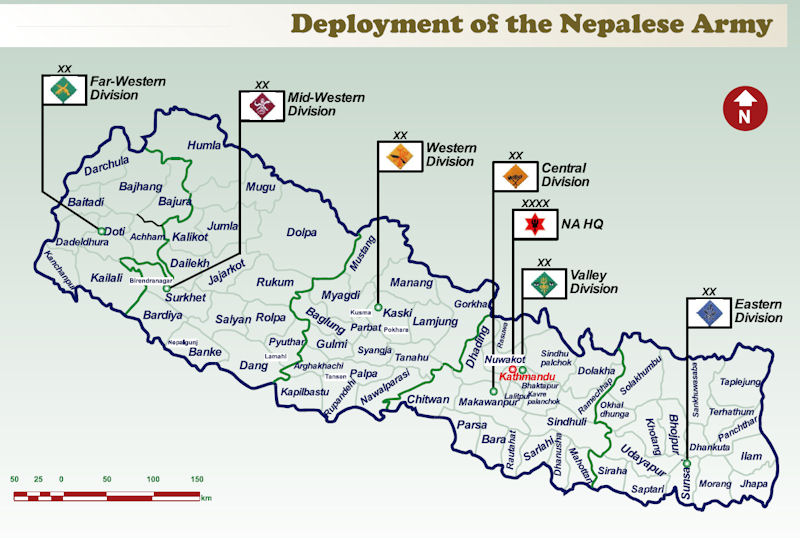
|
NEWSLETTER
|
| Join the GlobalSecurity.org mailing list |
|
|
|

